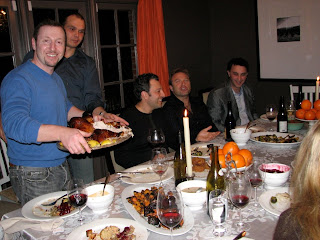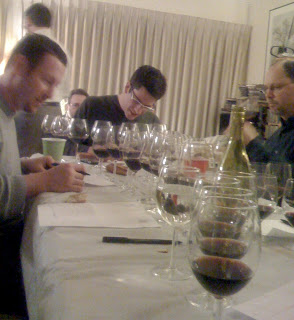Blind-Tasting Thanksgiving at the Chevskies, 2008

This was the second year in a row that my wife and I hosted the "day-after-Thanksgiving" party for our friends at our historic home in Palo Alto - hopefully two years in a row means "tradition". This time we focused on making the juiciest turkey possible (free-range willie bird from AG Ferrari that we brined for 24 hours in salt-herb-and-spice solution), stuffed with oranges, lemons and herbs from our garden, accompanied by home-made gravy (infused with Pinot Grigio) and oven- and grill-roasted autumn vegetables (beets, carrots, butternut squash, sweet potatoes, shallots, brussels sprouts with sea-salt and dressing drizzled on top). Our friends brought various appetizers and desserts: home-made cheese spreads (zesty!), marinated cooked grapes (tasty!), crab cakes (always satisfying!), pickled veggy salads (interesting), bean & walnut salad (yum!), stuffing (of course), pumpkin cheesecake (delicous), pecan pie (sweet), and more things I can't remember. So it

